Sagar K.C.'s Blog
September 8, 2025
Sagar KC On Balancing AI Automation and Authenticity in Emails
AI is changing how we send emails. It can help you reach many people fast and with personal touches. But when AI gets too smart, emails start to sound cold and fake. That’s a problem because real connection makes email work.
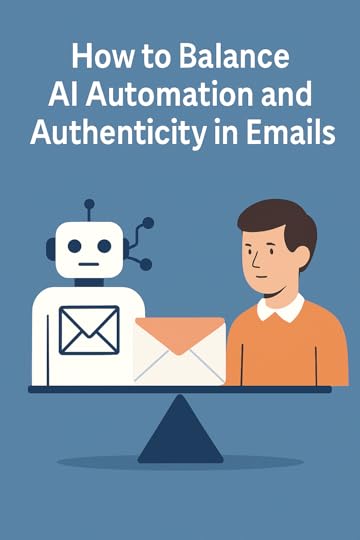
If you want to use AI without losing your voice, keep reading. Here’s what I have learned.
Why AI Helps Email MarketingAI tools can do useful jobs like:
Writing subject lines that get openedPicking the best time to send emailsGrouping people by their actionsSending automated follow-upsThese save time and help you send the right message to the right person. But they can also make emails feel like they came from a robot.
Why Realness Matters More Than AutomationThink about your inbox. How many emails do you delete because they sound fake or boring? People can tell when emails have no personality.
Real emails build trust. They make readers want to reply and stay loyal. Without that, emails are just noise.
How to Keep Emails Human with AIHere are some tips to use AI but stay real:
Let AI help, don’t write for youUse AI for data and drafts. Always add your own voice before sending.Write like you talk
Pretend you’re emailing a friend. Use a friendly, simple tone.Make it personal
Don’t just use a first name. Mention past actions or preferences.Test what works
Use AI to test subject lines or send times. Choose what feels right.Be honest about automation
Tell readers if your email is automated. It feels more real that way.Final Thoughts
AI can boost your email work. But it should not replace your voice. When you mix smart tools with real stories, your emails get read and remembered.
[image error]August 22, 2025
Sagar KC’s Email Marketing Crash Course for E-commerce

Alright, let’s cut through the noise for a sec. Online stores are everywhere, ads are bleeding everyone dry, and social media? The algorithm overlords change the rules every Tuesday. But email? Email is the scrappy underdog that keeps winning. Seriously, every buck you throw at email marketing brings back, on average, thirty-six. Thirty-six! Try getting that from your Instagram “strategy.” Good luck.
If you’re running an e-comm gig (or thinking about it), getting good at email isn’t just smart, it’s survival. Loyal customers, repeat buyers, steady cashflow… yeah, you want all that.
Think of this as your cheat sheet to email marketing for online stores. We’ll hit the basics, then level up with stuff like automation, audience splits, and getting people to click “buy now” instead of ghosting.
Why Email Still Slaps for E-commNobody can take your list away. Meta cannot throttle you here. Your list = your rules.ROI is huge. Email makes your ad spend look like pocket change.You can get personal. Like, “Hey Sarah, we know you love those shoes” personal.Customer loyalty. This is how you get people coming back.Scales easily. Got 100 subscribers? Or 100,000? No problem.Building the List (Your Money Machine)How you actually get emails:
Add a signup form on your site in the header, footer, or blog.Use a pop-up with a discount or freebie, not just “Join our newsletter.”Ask at checkout. They are already buying, get them on the list.Hype your newsletter on socials.Don’t be sketchy:
Never buy a list. You will regret it.Use double opt-in to keep things clean.What to use: Mailchimp, Klaviyo, ConvertKit, Omnisend, ActiveCampaign.
Know Your CrowdSplit your list. Blasting the same thing to everyone does not work.
New subscribers: Welcome them.First-time buyers: Turn them into second-timers.Repeat buyers: Treat them like VIPs.Big spenders: Roll out the red carpet.Cart leavers: Chase them down (nicely).Emails You Gotta SendWelcome Series: Roll out the red carpet. This is your first date, make sure you leave a good impression. Here’s how you can do it.Promos: Flash sales, new drops, holiday offers.Transactional: Order confirmations, shipping updates, receipts. People open these.Cart Abandonment: “Hey, you forgot something.” I wrote a twenty page guide on that. Here’s why.Post-Purchase: Thank you notes, review requests, cross-sells.Win-Backs: “Where did you go?” emails.How to Write Emails People OpenMake sure the emails that you write are not spammy. Here’s how to avoid it:
Subject lines: Keep it punchy. Curiosity helps.Writing style: Talk like a human. Tell a story. Show benefits.Design: Mobile-friendly, easy to skim, strong visuals, one clear call-to-action.Psychology: Use FOMO, urgency, and social proof.Automation is Your Secret WeaponSet up automated flows:
Welcome emailsCart recoveryBrowse abandonmentBirthday and anniversary offersWin-back blastsBut know when to say no to automations.
What to Watch (Key Numbers)Open rate (less important now)Click-through rate (this one matters)Conversion rate (the goal)Revenue per emailList growth and unsubscribesPro tip: Don’t obsess over open rates. Focus on clicks and sales.
Level Up with TheseDynamic content that changes per userAI-powered product recommendationsShow customer photos or reviewsLoyalty programsCombine email with SMS or retargeting adsBig Mistakes to AvoidSpamming or ghosting your list. Find the balance.Spammy subject lines lead to junk folders.Bad mobile design causes instant unsubscribes.Keeping dead emails on your list.Ignoring laws like GDPR and CAN-SPAM.Handy Tools and ResourcesEmail: Klaviyo, Omnisend, Mailchimp, ConvertKitDesign: Canva, Figma, StripoAnalytics: Google Analytics, ESP dashboardsLearning: HubSpot Academy, Klaviyo Blog, Grow with Email MarketingWhere Email is HeadingAI that helps write or optimize contentInteractive emails with polls or in-email checkoutMore privacy focus and less trackingCombining with SMS, WhatsApp, and social channelsFinal TakeEmail is your e-comm growth engine. Get the basics right: build your list, segment it, automate campaigns, and keep optimizing. It works.
Want more strategies, templates, and real-world case studies? Check out my book Grow with Email Marketing.
[image error]August 8, 2025
Sagar KC on Emails That Don’t Feel Like Spam
Email marketing is one of the oldest ways to reach people online. Even with all the new social media apps, email still remains the most effective communication tool. But many emails feel like junk mail. If you want your emails to get opened and read, this article is for you.

I’m Sagar KC. I have worked with many businesses to make emails that feel real. Here are easy steps to write emails your readers will like.
Why Do Many Emails Get Deleted?Look at your inbox. How many emails do you delete without reading? Probably a lot. Many emails sound boring or like a sales pitch. They forget a real person is reading.
If your email wastes time or is not useful, people will ignore it.
Make Subject Lines Like a Friendly InvitationThe subject line is the first thing people see. It must make them want to open the email. Avoid shouting or clickbait.
Try simple lines that promise help or ask a question. For example, “3 ways to improve your sales emails” sounds better than “BUY NOW!!!”
Tips for good subject lines:
Keep it clearUse everyday wordsAsk a questionAvoid spam words like “free” or “urgent”Write Like You Talk to a FriendMany emails sound too formal. Imagine you are writing to a friend. How would you speak?
Use simple words and contractions like “you’re” instead of “you are.” Tell a short story or share an idea. When your email feels real, people will read it.
Give Something Useful Every TimeDon’t only sell in your emails. Give your readers tips or stories they can use. For example, explain how a product can help solve a problem.
Keep Emails Short and Easy to ReadPeople scan emails fast. Long paragraphs lose their attention. Write short paragraphs. Use bullet points to break up ideas.
Make It Personal Without Overdoing ItAdding a name is good. But you can also send emails based on what readers like. For example, someone who bought running shoes may want news about new sneakers.
Relevant emails get opened more.
End With a Clear Call to ActionTell readers what you want them to do next. Visit your website? Reply? Download a guide? Say it simply and kindly. For example, “Click here to learn more.”
Keep Testing and LearningGood email writing takes practice. Try different subject lines and messages. See what your readers like. Keep getting better.
Final ThoughtsWriting emails that don’t feel like spam means respecting your readers. It means giving them value. I am Sagar KC, and I know real emails build trust.
[image error]August 5, 2025
The ‘Sagar KC Stack’ for Ecommerce Email: Copy, Cadence, and Conversion
What if your e-commerce emails didn’t feel like emails at all, just conversations that convert?

That’s the goal I chase with every flow I build.
For years, I’ve worked behind the scenes crafting email strategies for ecommerce brands that want more than just a quick sale. They want loyalty. Lifetime value. Word-of-mouth that doesn’t require ad spend. But most of all, they want customers who come back without being begged.
And it all starts with what I call the Sagar KC Stack — a simple 3-part framework: Copy, Cadence, and Conversion.
Whether you’re running a Shopify store or scaling a high-ticket DTC brand, this stack will help you build emails that don’t just “perform” but connect.
Let’s break it down.
📬 Part 1: Copy That Feels Human (Even When Automated)Here’s the thing. Most e-commerce emails sound like they were written by robots who failed their personality test.
You’ve seen them:
“Hi [First Name], here’s 10% off.”
“Buy now before it’s gone.”
“You left something behind.”
They’re not wrong, they’re just forgettable.
Your customer’s inbox is a sacred space. It’s where they get updates from friends, invoices from their boss, and that weird newsletter they keep forgetting to unsubscribe from. So if you’re going to show up there, you’d better make it worth their time.
Here’s how I approach email copy that doesn’t sound like spam:
Write like you talk. Use contractions. Say “you’ll love this” instead of “you are going to enjoy this.”Ask questions. Emails that feel like a conversation get more replies. That boosts your sender score too.Personalize beyond the first name. Reference browsing behavior, past purchases, or the specific product category they liked.One of my favorite tricks?I imagine I’m writing to one ideal customer. Not “the list.” Just one person who is busy, distracted, skeptical, but curious.
And every email answers this question: What would make them feel seen right now?
👉 If you want examples of powerful email copy, I recommend reading Really Good Emails or even better, studying onboarding emails from brands like Harry’s and Oura. They nail the balance between helpful and human.
🧭 Part 2: Cadence That Builds Trust (Not Fatigue)Think of email cadence like a rhythm in music. Too slow, and your audience forgets the melody. Too fast, and they hit unsubscribe.
Most ecommerce brands either send way too many emails (think: promo every 2 days) or ghost their customers for weeks after a welcome series.
Both are trust killers.
Instead, I build cadence like a story arc:
Act 1: The Welcome
Day 0: Warm hello and origin storyDay 2: Best-sellers and customer testimonialsDay 4: Educational content or problem-solving tipDay 7: Soft CTA or offer (not a discount bomb)Act 2: The Discovery Phase
Weekly updates with behind-the-scenes, new arrivals, how-to’sBuild anticipation, not urgencyAct 3: The Conversion Loop
Based on engagement (opened, clicked, visited)Smart retargeting, reminders, reviewsConsistency is better than frequency.
The goal is not just to sell, but to earn the right to stay in the inbox. Like a friend who shows up just enough to matter, without being clingy.
📌 Pro Tip: Tools like Klaviyo or ConvertKit let you segment users based on activity. Use that to slow down or speed up cadence based on real behavior.
Also check out: How I Use Email Flows to Recover $30K for a DTC Brand (internal link opportunity if you expand this later).
💰 Part 3: Conversion Without the CringeThis is where most brands panic.
They think converting equals pushing. That’s why you see endless “last chance” or “we miss you” emails with countdown timers slapped on.
Here’s what I’ve found instead:
Great email marketing doesn’t feel like marketing. It feels like service.
Want someone to buy? Show them:
How your product fits their current season (back to school, winter dry skin, travel hacks)What other customers say about itA real transformation story (before and after, habit change, ROI)Instead of:
“Here’s 15% off”
Try:
“Here’s how Arjun used this to go from 4 hours of sleep to waking up refreshed every day.”
Or,
“You’ve been eyeing this for 3 days. We’ve got 12 left in stock.”Conversion without cringe means:Using urgency sparinglyLeading with value, not discountMaking the CTA feel like a natural next step, not a hard sell
You’re not just closing a sale. You’re opening a relationship.
⚙️ Real-Life: The Stack in ActionLet me give you a quick story.
I once worked with a Nepal-based fashion brand struggling with abandoned carts. Their emails were pretty but robotic.
We rewrote them using the Sagar KC Stack:
Reframed the copy to feel personal (“Still thinking about that blue Kurti?”)Added cadence spacing (instead of 3 emails in 2 days, we spread them over a week)Included a real customer quote and low-stock triggerResult?
+22% recovered carts in 30 days.
Open rates jumped from 18% to 41%.
And unsubscribes dropped to nearly zero.
It wasn’t magic. It was just the right message, at the right time, in the right tone.
💡 The TakeawayIf you’re tired of spray-and-pray emails that go nowhere, stop thinking in terms of campaigns, and start thinking in stacks.
Copy that earns attention.
Cadence that builds trust.
Conversion that feels like connection.
August 1, 2025
What I’ve Learned Working with 70+ DTC Brands (And the Patterns I See)
When I started my journey into ecommerce and email marketing, I never imagined I’d one day help over 70 DTC brands, from small Shopify startups to scaling eight-figure giants. My name is Sagar KC, and I’m a retention marketing strategist. I help ecommerce brands unlock more revenue through personalized email systems, smarter customer journeys, and high-performing retention strategies.

After working behind the scenes for brands across the U.S., Australia, and the UK, I’ve spotted some patterns. Both the red flags that quietly kill growth and the systems that fuel customer loyalty. In this post, I’ll break down what I’ve learned from working with dozens of DTC brands and what that might mean for your business.
You can learn more about my work at sagarkc.com.
The Mistakes Almost Everyone MakesBefore I talk about what works, let me show you what I see all the time.
1. Email Is an AfterthoughtMost brands focus 90% of their energy on paid ads and 10% (if that) on retention. That’s a mistake. If you’re spending thousands acquiring customers and have no clear system to bring them back, you’re lighting money on fire.
2. No Welcome Flow or Just a Boring OneThe first email is your first impression. And most welcome emails I audit? They either scream “Here’s 10% off” or worse, nothing at all. A good welcome flow builds brand trust before it tries to sell.
3. Treating Email Like a BillboardEmail isn’t a billboard for discounts. It’s a conversation. Brands that only blast out coupons end up training their audience to only buy on sale. Nothing kills margin like that.
Patterns That Set Winning Brands ApartNow let’s talk about what works. These are the repeatable systems and behaviors I’ve seen across the most successful DTC brands I’ve worked with.
1. They Prioritize Retention From Day OneThey don’t wait until they hit seven figures to think about customer retention. Instead, they build a customer journey map early so every first-time buyer gets a path to become a repeat customer.
2. They Understand Their Customer on a Deeper LevelWinning brands use actual customer data to shape their messaging, not just gut feelings. They segment based on behavior, not just broad demographics.
3. They Obsess Over the Post‑Purchase ExperienceThe best brands don’t say goodbye after the sale. They use email flows to deliver post-purchase content that educates, builds anticipation, and strengthens the relationship.
4. They Let Their Brand Voice Shine
Pro tip: One of my favorite post-purchase tricks is a delivery flow that thanks them by name, sets delivery expectations, and recommends a product they’ll likely love next. Simple, powerful.
Whether playful, premium, or poetic, the best DTC brands don’t sound like everyone else. They sound like themselves. Every email feels like a note from a friend, not a corporate memo.
What This Means for YouWhether you’re just starting your DTC brand or already running with momentum, here’s what I want you to know:
Retention is not just a tactic. It’s a growth strategy.Email isn’t dead. Bad email is dead.You don’t need 50 emails. You need the right 5.If you’re not seeing the repeat purchases you want, take a step back and ask:
Are we guiding customers, or just hoping they come back?
As someone who started this journey from Kathmandu with a laptop and curiosity, I never take this work for granted. I’ve been lucky to work with brands that trust me with their customer relationships, and I’ve made it my mission to help them keep those customers, not just chase new ones.
If you want to see how I think about email marketing at a deeper level, check out this article I wrote: “The Story So Far — How I, Sagar KC, Became the Guy Who Talks About Retention, Not Just Reach”.
If you’re ready to upgrade your email retention strategy or want a quick teardown of your current flows, reach out via sagarkc.com. Let’s stop leaking revenue and start building long-term loyalty.
[image error]July 31, 2025
What the TechBullion Interview Didn’t Say About My Email Journey
When TechBullion interviewed me recently, we talked a lot about email marketing strategy. How I work with DTC brands, what Emar Media focuses on, and how my book Grow with Email Marketing came to be.
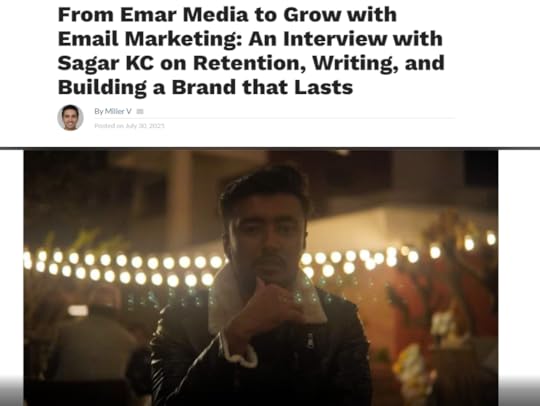
But here’s what didn’t make it into the article. The messy, unscripted part of the journey.
Before I became known for email and retention, I worked as a digital marketer, handling everything. Designing creatives, writing copy, running ads, setting up automations, fixing websites, and figuring things out on the fly. It wasn’t glamorous. It was chaotic, but I learned a lot.
What became clear to me over time was that brands often pour their energy into getting attention, but rarely think about what happens after they get it.
And that gap is where email came in.
It wasn’t a fancy pivot. It was more of a realization. If we’re not taking care of the people who already said “yes,” we’re leaving value and trust on the table. That belief led to Emar Media, and later to the books I’ve written. Email, to me, is not just a channel. It’s a conversation tool, a way to build relationships at scale.
In the interview, you’ll read about the numbers. 48% email revenue growth, $200K+ recovered through a single flow, and segmentation that cuts unsubscribes in half. All true. But behind those results is a simple idea:
Marketing should feel like service, not noise.
Read my last post : From Events to Inboxes: How I Blend Email Marketing With Public Speaking
[image error]July 30, 2025
From Events to Inboxes: How I Blend Email Marketing With Public Speaking
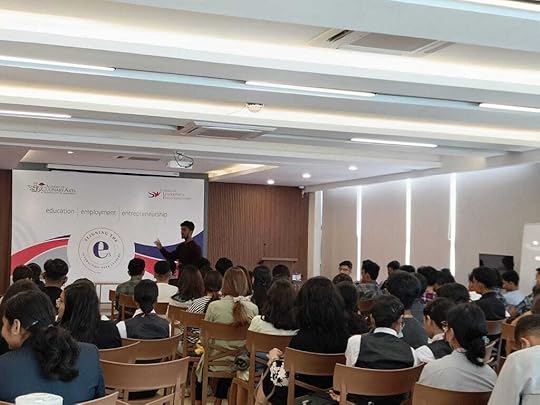
If you had told me a few years ago that email marketing would take me from late-night campaign planning to standing in front of hundreds of students at colleges like Kathmandu University School of Management and Global College of Management, I probably would’ve shrugged it off. But here we are. Email changed the way I work, and speaking gave me the chance to share it.
The Email Journey That Got Me HereI didn’t get into email marketing because it was trendy. I got in because I saw the gap. Everyone was focused on paid ads, ignoring the power of the inbox. I went deep into flows, segmentation, abandoned carts, deliverability, copy. I helped over 70 e-commerce brands scale revenue through email alone.
Some of those campaigns printed $10 000 without a single ad spend. That’s when I knew I was onto something real. I wrote Grow with Email Marketing and The Abandoned Cart Recovery Playbook to document the strategies that actually work. Not theory. Just tested, practical stuff.
Speaking at Colleges: An Unexpected Chapter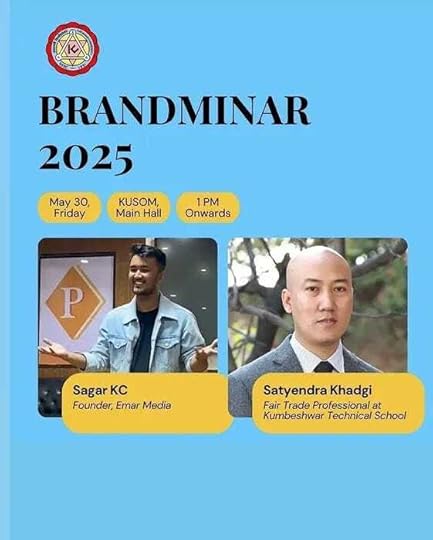
My first speaking invite came from Global College of Management. Then KUSOM reached out. At first, I thought I’d just go and share a few slides, but it turned out to be way more than that. These weren’t just classroom talks. These were full-on strategy sessions with students who genuinely wanted to learn how email marketing works in the real world.
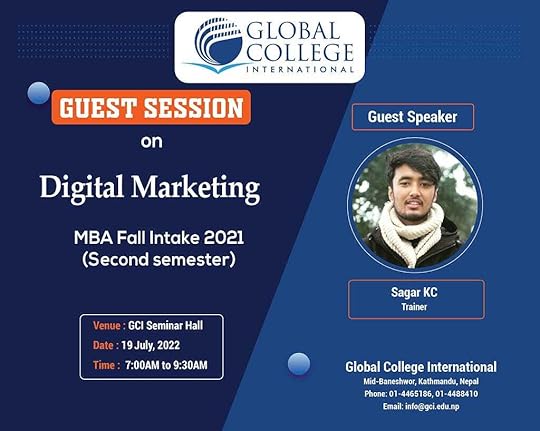 Sagar KC speaking at Global College of Management on email marketing
Sagar KC speaking at Global College of Management on email marketingThey asked sharp questions. They wanted to know how to write better subject lines, how to recover more carts, and how to build flows that actually convert. So I broke it down the same way I would for a client. No filters. Just the real stuff.
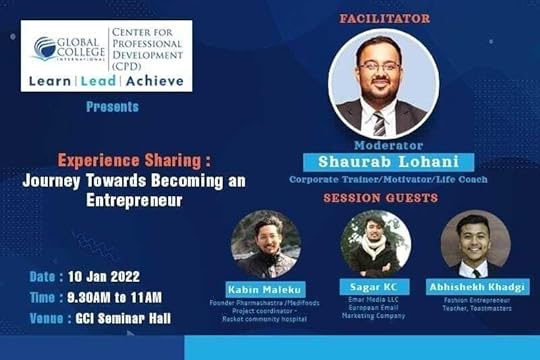 What I Talk About
What I Talk AboutMy sessions are simple and practical. I focus on things that brands, founders, and even aspiring marketers can apply the next day. Some go-to topics I love covering:
The core email flows every ecommerce brand needsHow to write subject lines that drive clicksWhy segmentation is underrated and powerfulReal-life case studies of email campaigns that brought in $5 000 to $15 000Why It MattersWhen I was a student, no one came to talk about building their own thing. So I show up now and try to be that person.
Read my last post : Sagar KC on retention
[image error]July 28, 2025
Sagar KC’s Glossary of Must-Know Email Marketing Terms in 2025
Email marketing is full of strange words.

If you’re new, it’s easy to get lost. If you’re not new, some terms have changed. This is my list of email terms every marketer should know in 2025.
1. Open RateThis shows how many people opened your email. It’s not always accurate anymore because of privacy updates.
Use it as a guide, not as the truth.
2. Click RateThis tells you how many people clicked a link in your email. This is more reliable than open rate.
Always track this.
3. CTR (Click Through Rate)This is the percent of people who clicked, out of those who opened. It helps you see if your email was interesting.
Good CTR means your content worked.
4. A/B TestingThis means sending two versions of something to see what works better. It could be a subject line, a button, or the whole email.
Test only one thing at a time.
5. AutomationThis is when emails send on their own, based on triggers. Like welcome emails after someone signs up.
Helpful if done right. Annoying if overused.
6. SegmentationThis is the act of splitting your list into groups. You can group by location, age, behavior, or what they clicked.
The goal is to send people what they care about.
7. PersonalizationAdding the reader’s name or using what you know about them. Good personalization feels real. Bad personalization feels creepy or fake.
Use wisely.
8. DeliverabilityThis means if your email reached the inbox or got stuck in spam. Many emails never make it.
Clean your list and avoid spammy words.
9. Bounce RateThis is when emails don’t deliver. Hard bounces are bad addresses. Soft bounces are short-term issues.
Too many bounces hurt your sender score.
10. Unsubscribe RateHow many people leave your list after an email. If this is high, your emails may be too frequent, too boring, or too off-topic.
Learn from it.
11. Welcome FlowA set of emails new subscribers get. It’s your first chance to connect. Don’t waste it.
Say thanks. Give value. Keep it short.
12. Abandoned Cart EmailAn email sent when someone adds to cart but doesn’t buy. These can bring in big revenue.
Make it simple. Remind them. Offer help.
13. Re-engagement CampaignA message to people who stopped opening your emails. It asks, “Still interested?”
If they don’t reply, it’s okay to remove them.
14. Spam Trigger WordsWords that get your email flagged. These include “Buy now,” “Free,” “Limited time,” or using too many emojis.
Write like a human, not a sales robot.
15. Plain Text EmailNo images, no fancy design. Just words. These feel more personal and are easier to deliver.
Sometimes, plain wins.
Email is not just about tools. It’s about how you speak to people. Knowing the right terms helps you work better and sound smarter.
But remember, clear writing wins over fancy words.
Read more at Sagarkc.com
[image error]July 27, 2025
Sagar KC on Saying No to Email Automation (When It Hurts More Than It Helps)
Automation is helpful until it isn’t.
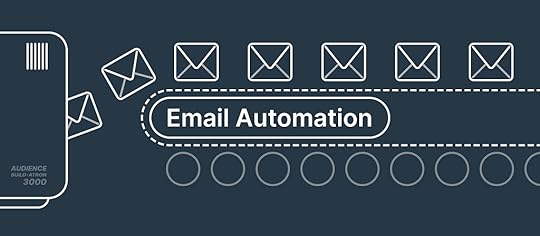
Most people add automation to look efficient. But bad automation wastes time and kills trust. I’ve seen brands lose thousands trying to save seconds.
Here’s what I’ve learned from saying no to automation when it didn’t make sense.
1. Not everything should be automatedJust because something can be automated doesn’t mean it should be.
Some brands send automated replies to real customer complaints. That’s lazy. It makes people feel ignored. I’d rather reply late than send a fake answer right away.
2. Good automation feels invisibleIf your automation feels robotic, it’s not helping. The best automation is silent. It runs in the background and supports the real work.
For example, sending a welcome email when someone signs up is smart. But sending a full 7-email sequence without checking results? That’s noise.
3. Context matters more than scaleAutomation is meant to save time at scale. But when you’re small, it can do more harm than good.
I’ve worked with small stores that automated their entire customer journey. It felt cold. Sales dropped. We removed the bots and added personal replies. Results improved.
People still want to talk to people.
4. You can’t automate careCustomers know when something is real. They know when it’s not.
A birthday email that says “Happy Birthday!” with no name or offer does nothing. A manual email with their name and a small bonus builds loyalty.
Automation should support care. It should not replace it.
5. Start manual, then automate what repeatsThis is my rule.
Do it by hand first. Learn what works. Then automate parts that repeat and don’t lose meaning.
Automation is not a shortcut. It’s a support tool.
Automation works best when it saves time without losing the human touch. The moment it feels forced, fake, or lazy, it’s better to stop.
Sometimes, the best way to scale is to stay human.
Read more at sagarkc.com
[image error]Sagar KC on Email Subject Lines That Actually Get Opened
Most emails die in the inbox. The subject line is the first filter. If it fails, the email never gets read.
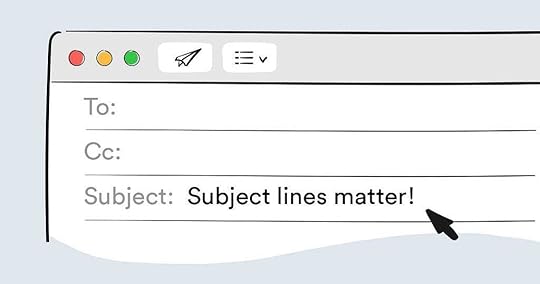
I’ve tested over 10,000 emails in the last few years. Some got open rates over 50%. Others dropped below 10%. The difference? The subject line.
Here’s what I’ve learned.
1. Short winsKeep subject lines under 50 characters. The shorter, the better.
Good:
Still thinking it over?
We saved your cart
One thing to know today
Bad:
Important update regarding your recent browsing session on our site
Let’s dive into this week’s exciting newsletter update
Clever lines confuse people. Specific lines get clicks.
Don’t say:
Don’t miss this
Say:
10% off ends tonight
Don’t say:
Let’s talk
Say:
Got 2 minutes to save 20%?
Numbers feel solid. Questions pull curiosity. Urgency makes people act.
Try these:
3 things you missed this week
Forgot something?
Closes in 4 hours
Don’t shout. Don’t write in all caps. Skip overused words like “FREE,” “WIN,” or “LIMITED TIME.”
If you sound like spam, Gmail will treat you like spam.
5. Test one thing at a timeChange only one thing per test. Subject line A vs Subject line B. Track the open rate. Use the winner next time.
Final tip: Preview lines matter tooThe preview line (the sentence under the subject) helps boost opens. Don’t waste it with “View this email in your browser.”
Write something that builds curiosity.
Like:
You’ll love what’s inside
There’s still time to claim this
Good subject lines don’t need magic words. They just need to make people stop scrolling. Think like your reader. What would make you click?
That’s what works.
If you liked this read, Sagar KC on Welcome Emails: Why the First Message Matters Most
Sagar KC on Retention: Why Retention Beats Reach
[image error]


